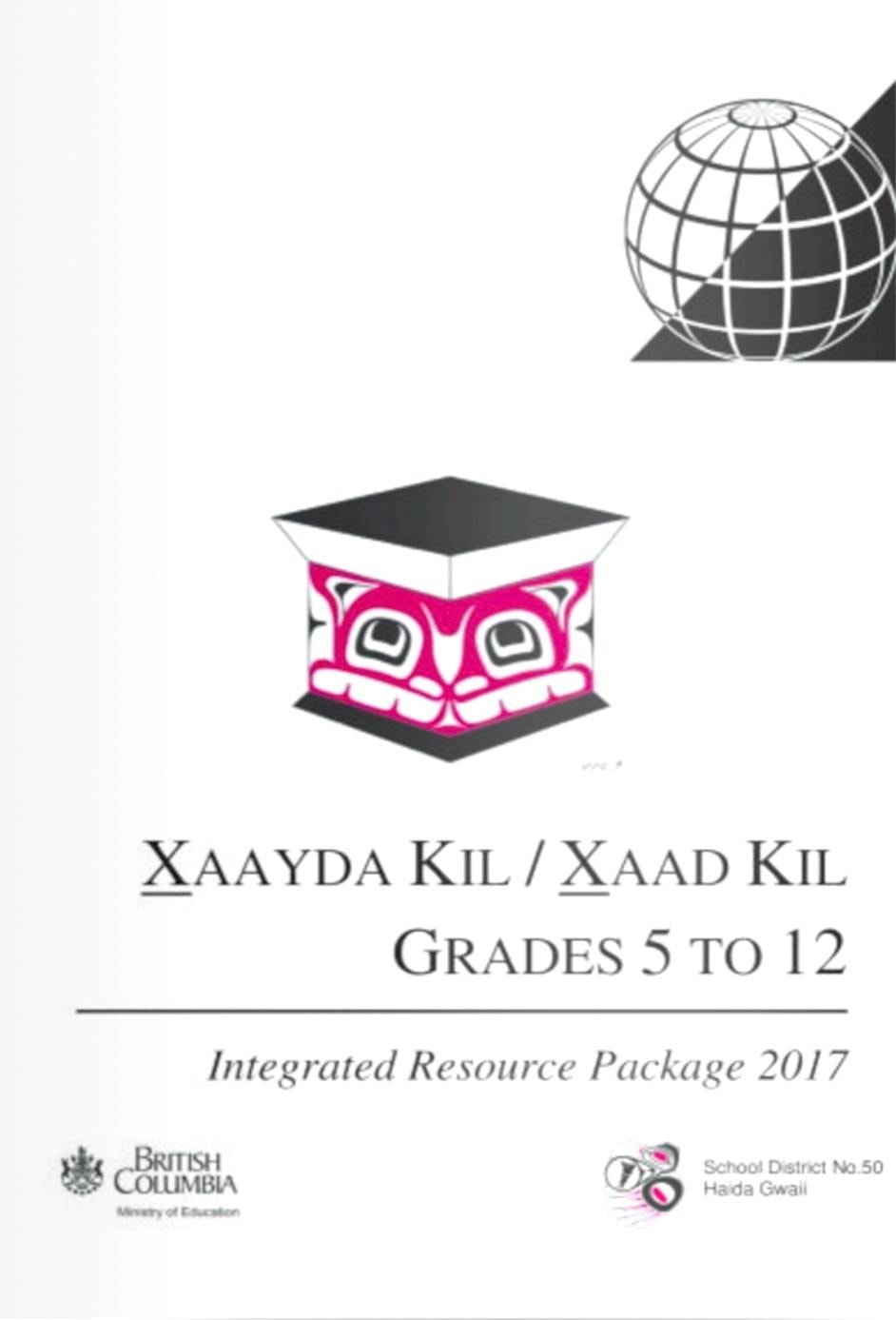Sk’aadga — learn.
Haida language students in Grades 5 to 12 will learn with help from a new tool next school year: a Xaayda Kil/Xaad Kil curriculum that is now accredited in B.C. schools.
Starting next week, Tahayghen and Sk’aadgaa Naay Elementary will host ceremonies to celebrate the change.
Jaskwaan Bedard, who was part of the team that put together the new curriculum for the school district, said it gives students practical, real-world milestones to meet each year, which is encouraging.
“You can see how far you’ve come, and where you need to go from there,” she said. Also, students who go to college or university can now get credit for Xaayda Kil/Xaad Kil as a second language.
While reading and writing take on a growing role in Grades 8 to 12 of the new curriculum, even in senior classes, students will mainly be assessed on how well they speak and listen in Haida.
Speakers in Skidegate, Massett, and Alaska worked hard to create a standard way of writing the three main Haida dialects that remain, but mostly as a means to save the spoken word.
The goal is to hear Haida language in daily life again.
“Traditionally, as an oral culture, that’s where the importance lies,” said Bedard.
Bedard started working with Haida language 14 years ago, and has seen many good developments since then.
With support from the First People’s Cultural Council, Bedard did a three-year Haida language apprenticeship with mentor Primrose Adams and learned from other elders, such as the late Stephen Brown and Mary Swanson.
Starting at six months, Bedard’s oldest daughter joined a language nest for newborns to four-year-olds in Old Massett, then moved on to the Haida language program at Chief Matthews Elementary School.
By the time she got to the Haida language class Bedard taught last year at Gudangaay Tlaats’gaa Naay Secondary, her daughter and her former language-nest friends were learning quite well.
“Their language ability was so high,” said Bedard.
“That was really encouraging.”
Working to revitalize Haida language at school isn’t a recent thing — Haida Gwaii schools started offering the first Haida language and culture classes in 1973.
It was a dramatic change from the ‘Indian’ residential schools and day schools that Haida children were forced to go to starting in 1920, where Haida language was forbidden.
Even when they returned home, the gap meant Haida parents only spoke English with their children.
“It’s not something easy to get back,” said Bedard. “Language has to be acquired at home, in a family situation where you’re immersed in it. That was taken away from us, really effectively, through the residential school process.”
Many of the elders Bedard has learned from were the eldest in their family — their younger sisters and brothers fell on the other side of Canada’s anti-indigenous language policy.
“It’s very striking,” said Bedard. “It’s almost like an axe mark. It’s not like there was this gradual loss of language.”
“The generation that fell on one side had that language surrounding them,” she said.
“And the generation on the other side didn’t.”
Today, UNESCO lists Haida language as critically endangered, given that most of the 40 fluent speakers are in their 80s and 90s. For now, learning at home from fluent parents isn’t an option.
But from language-nest programs to SHIP, phone apps and the written language, there are lots of new tools.
“It’s an unnatural way to learn language, to sit with pen and paper, but we have to make adaptations,” said Bedard.
“That’s really what it’s about, and being forgiving, really fostering relationships respectfully with our teachers.”
Ceremonies to celebrate the new Haida language curriculum will be held on June 2 and 5 at Tahayghen and Sk’aadgaa Naay Elementary Schools. Both start at 1:30 p.m., and will include singing, dancing, cake, and speeches.
